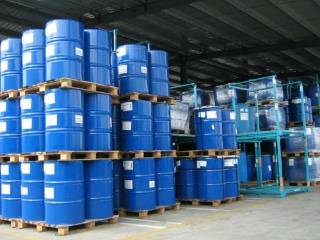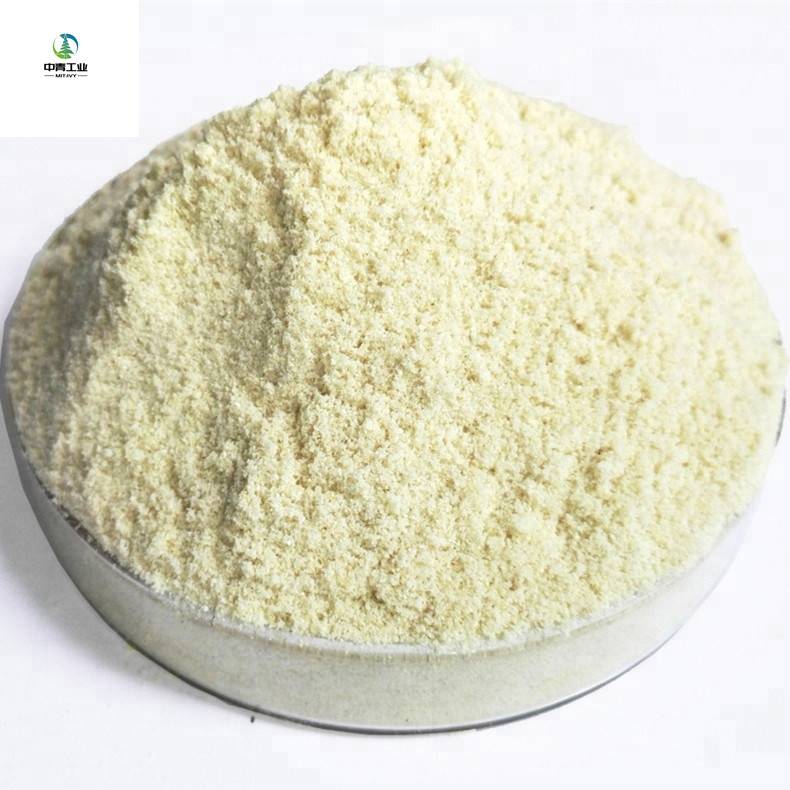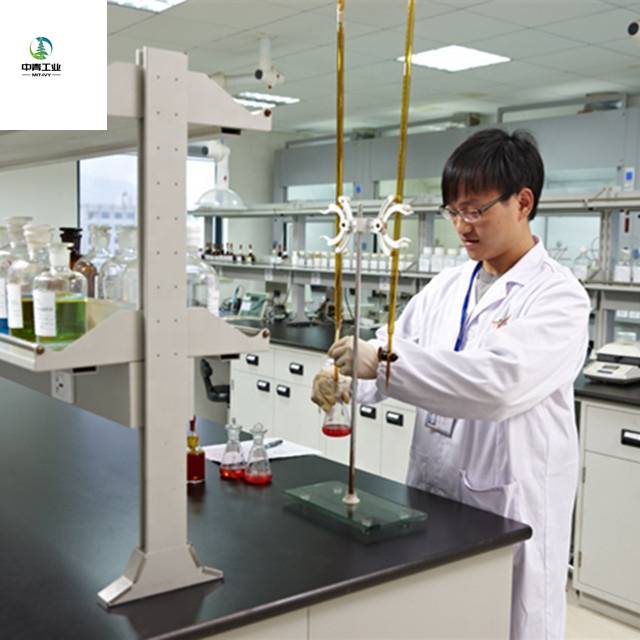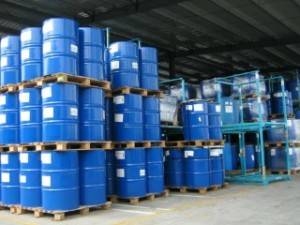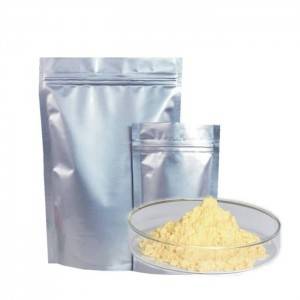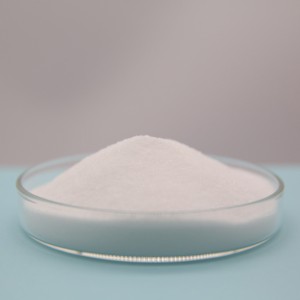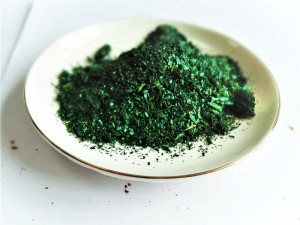3-Hydroxy-2-naphthoic acid in stock from china
Product name : 3-Hydroxy-2-naphthoic acid
Product Number : H46007
Brand : MIT-IVY
REACH No. : A registration number is not available for this substance as the
substance or its uses are exempted from registration, the
annual tonnage does not require a registration or the
registration is envisaged for a later registration deadline.
CAS-No. : 92-70-6
1.2 Relevant identified uses of the substance or mixture and uses advised against
Identified uses : Laboratory chemicals, Manufacture of substances
1.3 Details of the supplier of the safety data sheet
Company : Mit-ivy Industry co., ltd
Telephone : +0086 1380 0521 2761
Fax : +0086 0516 8376 9139
1.4 Emergency telephone number
Emergency Phone # : +0086 1380 0521 2761
+0086 0516 8376 9139
SECTION 2: Hazards identification
2.1 Classification of the substance or mixture
Classification according to Regulation (EC) No 1272/2008 Acute toxicity, Oral (Category 4), H302
Eye irritation (Category 2), H319
For the full text of the H-Statements mentioned in this Section, see Section 16.
2.2 Label elements
Labelling according Regulation (EC) No 1272/2008 Pictogram
MIT-IVY- H46007 Page 1 of 9
The life science business of Merck operates as MilliporeSigma in
the US and Canada
Signal word Warning
Hazard statement(s)
H302 Harmful if swallowed.
H319 Causes serious eye irritation.
Precautionary statement(s)
P305 + P351 + P338 IF IN EYES: Rinse cautiously with water for several minutes.
Remove contact lenses, if present and easy to do. Continue
rinsing.
Supplemental Hazard
Statements none
2.3 Other hazards – none
SECTION 3: Composition/information on ingredients
3.1 Substances
Formula : C11H8O3
Molecular weight : 188,18 g/mol
CAS-No. : 92-70-6
EC-No. : 202-180-8
Component Classification Concentration
3-Hydroxy-2-naphthoic acid
Acute Tox. 4; Eye Dam. 1;
Aquatic Chronic 3; H302,
H318, H412 <= 100 %
For the full text of the H-Statements mentioned in this Section, see Section 16.
SECTION 4: First aid measures
4.1 Description of first aid measures
General advice
Consult a physician. Show this safety data sheet to the doctor in attendance.
If inhaled
If breathed in, move person into fresh air. If not breathing, give artificial respiration.
Consult a physician.
In case of skin contact
Wash off with soap and plenty of water. Consult a physician.
In case of eye contact
Rinse thoroughly with plenty of water for at least 15 minutes and consult a physician.
If swallowed
Never give anything by mouth to an unconscious person. Rinse mouth with water. Consult
a physician.
4.2 Most important symptoms and effects, both acute and delayed
The most important known symptoms and effects are described in the labelling (see section
2.2) and/or in section 11
MIT-IVY- H46007 Page 2 of 9
The life science business of Merck operates as MilliporeSigma in
the US and Canada
4.3 Indication of any immediate medical attention and special treatment needed
No data available
SECTION 5: Firefighting measures
5.1 Extinguishing media
Suitable extinguishing media
Use water spray, alcohol-resistant foam, dry chemical or carbon dioxide.
5.2 Special hazards arising from the substance or mixture
Carbon oxides
5.3 Advice for firefighters
Wear self-contained breathing apparatus for firefighting if necessary.
5.4 Further information
No data available
SECTION 6: Accidental release measures
6.1 Personal precautions, protective equipment and emergency procedures
Use personal protective equipment. Avoid dust formation. Avoid breathing vapours, mist
or gas. Ensure adequate ventilation. Avoid breathing dust.
For personal protection see section 8.
6.2 Environmental precautions
Prevent further leakage or spillage if safe to do so. Do not let product enter drains.
Discharge into the environment must be avoided.
6.3 Methods and materials for containment and cleaning up
Pick up and arrange disposal without creating dust. Sweep up and shovel. Keep in
suitable, closed containers for disposal.
6.4 Reference to other sections
For disposal see section 13.
SECTION 7: Handling and storage
7.1 Precautions for safe handling
Avoid contact with skin and eyes. Avoid formation of dust and aerosols.
Provide appropriate exhaust ventilation at places where dust is formed.Normal measures
for preventive fire protection. For precautions see section 2.2.
7.2 Conditions for safe storage, including any incompatibilities
Store in cool place. Keep container tightly closed in a dry and well-ventilated place.
7.3 Specific end use(s)
Apart from the uses mentioned in section 1.2 no other specific uses are stipulated
MIT-IVY- H46007 Page 3 of 9
The life science business of Merck operates as MilliporeSigma in
the US and Canada
SECTION 8: Exposure controls/personal protection
8.1 Control parameters
Components with workplace control parameters
8.2 Exposure controls
Appropriate engineering controls
Handle in accordance with good industrial hygiene and safety practice. Wash hands
before breaks and at the end of workday.
Personal protective equipment
Eye/face protection
Safety glasses with side-shields conforming to EN166 Use equipment for eye
protection tested and approved under appropriate government standards such as
NIOSH (US) or EN 166(EU).
Skin protection
Handle with gloves. Gloves must be inspected prior to use. Use proper glove
removal technique (without touching glove’s outer surface) to avoid skin contact
with this product. Dispose of contaminated gloves after use in accordance with
applicable laws and good laboratory practices. Wash and dry hands.
The selected protective gloves have to satisfy the specifications of Regulation (EU)
2016/425 and the standard EN 374 derived from it.
Full contact
Material: Nitrile rubber
Minimum layer thickness: 0,11 mm
Break through time: 480 min
Material tested:Dermatril® (KCL 740 / MIT-IVY Z677272, Size M)
Splash contact Material: Nitrile rubber
Minimum layer thickness: 0,11 mm
Break through time: 480 min
Material tested:Dermatril® (KCL 740 / MIT-IVY Z677272, Size M)
data source: KCL GmbH, D-36124 Eichenzell, phone +49 (0)6659 87300, e-mail
sales@kcl.de, test method: EN374
If used in solution, or mixed with other substances, and under conditions which
differ from EN 374, contact the supplier of the CE approved gloves. This
recommendation is advisory only and must be evaluated by an industrial hygienist
and safety officer familiar with the specific situation of anticipated use by our
customers. It should not be construed as offering an approval for any specific use
scenario.
Body Protection
Complete suit protecting against chemicals, The type of protective equipment must
be selected according to the concentration and amount of the dangerous substance
at the specific workplace.
Respiratory protection
For nuisance exposures use type P95 (US) or type P1 (EU EN 143) particle
respirator.For higher level protection use type OV/AG/P99 (US) or type ABEK-P2 (EU
EN 143) respirator cartridges. Use respirators and components tested and approved
under appropriate government standards such as NIOSH (US) or CEN (EU).
MIT-IVY- H46007 Page 4 of 9
The life science business of Merck operates as MilliporeSigma in
the US and Canada
Control of environmental exposure
Prevent further leakage or spillage if safe to do so. Do not let product enter drains.
Discharge into the environment must be avoided.
SECTION 9: Physical and chemical properties
9.1 Information on basic physical and chemical properties
a) Appearance Form: powder
Colour: light yellow
b) Odour No data available
c) Odour Threshold No data available
d) pH No data available
e) Melting
point/freezing point Melting point/range: 218 – 221 °C
f) Initial boiling point
and boiling range No data available
g) Flash point 150,00 °C – closed cup
h) Evaporation rate No data available
i) Flammability (solid,
gas) No data available
j) Upper/lower
flammability or
explosive limits No data available
k) Vapour pressure No data available
l) Vapour density No data available
m) Relative density No data available
n) Water solubility No data available
o) Partition coefficient:
n-octanol/water log Pow: 2,059
p) Auto-ignition
temperature No data available
q) Decomposition
temperature No data available
r) Viscosity No data available
s) Explosive properties No data available
t) Oxidizing properties No data available
9.2 Other safety information
No data available
SECTION 10: Stability and reactivity
10.1 Reactivity
No data available
MIT-IVY- H46007 Page 5 of 9
The life science business of Merck operates as MilliporeSigma in
the US and Canada
10.2 Chemical stability
Stable under recommended storage conditions.
10.3 Possibility of hazardous reactions
No data available
10.4 Conditions to avoid
No data available
10.5 Incompatible materials
No data available
10.6 Hazardous decomposition products
Hazardous decomposition products formed under fire conditions. – Carbon oxides
Other decomposition products – No data available
In the event of fire: see section 5
SECTION 11: Toxicological information
11.1 Information on toxicological effects
Acute toxicity
LD50 Oral – Rat – male and female – 832 mg/kg
(OECD Test Guideline 401)
absorption
Skin corrosion/irritation Skin – Rabbit
Result: No skin irritation – 4 h
(OECD Test Guideline 404)
Serious eye damage/eye irritation Eyes – Rabbit
Result: Irreversible effects on the eye – 24 h
(OECD Test Guideline 405)
Respiratory or skin sensitisation
Sensitisation test: – Guinea pig
Result: Does not cause skin sensitisation.
(OECD Test Guideline 406)
Germ cell mutagenicity Ames test
Escherichia coli/Salmonella typhimurium
Result: negative
OECD Test Guideline 475
– male and female – Bone marrow
Result: negative
Carcinogenicity
IARC: No component of this product present at levels greater than or equal to 0.1% is
identified as probable, possible or confirmed human carcinogen by IARC.
Reproductive toxicity
Specific target organ toxicity – single exposure Acute oral toxicity – Nausea, Vomiting, Diarrhoea
Acute inhalation toxicity – Possible damages:, mucosal irritations
